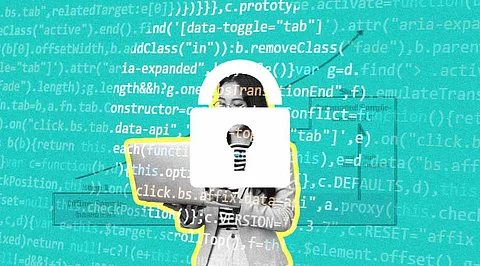

The significance of cybersecurity in an ever-digital environment cannot be emphasized. As technology evolves, so do the tactics and terminologies used by cybercriminals. To stay ahead of the curve and protect your digital assets, it's essential to be aware of the latest cybersecurity terms. In 2023, the landscape continues to shift, and new concepts and buzzwords emerge.
Zero Trust: Zero Trust is a security framework that assumes no trust within or outside an organization's network. It is based on the principle of "never trust, always verify." In a zero-trust model, every user and device, both inside and outside the network, is treated as a potential threat. This approach emphasizes strict access controls, continuous monitoring, and strong authentication to mitigate risks.
Ransomware-as-a-Service (RaaS): Ransomware-as-a-Service is a business model where cybercriminals provide ransomware tools and services to other criminals, who then carry out attacks. RaaS makes it easier for even less experienced hackers to launch ransomware attacks, leading to a proliferation of ransomware incidents. Understanding RaaS is critical for organizations looking to defend against these attacks.
Cyber Threat Intelligence: Cyber Threat Intelligence refers to the knowledge and insights gained by analyzing data related to potential cyber threats. It involves collecting and analyzing information about emerging threats, attacker tactics, techniques, and procedures. By staying informed about cyber threat intelligence, organizations can proactively defend against potential attacks.
Deepfake: Deepfakes are highly convincing, AI-generated videos, images, or audio recordings that manipulate and impersonate individuals. They can be used for various malicious purposes, including disinformation campaigns and impersonation attacks. Detecting and addressing deepfake technology is crucial in the fight against digital deception.
Multi-Factor Authentication (MFA): Multi-factor authentication enhances security by requiring users to provide two or more authentication factors before gaining access to an account or system. This typically includes something the user knows (like a password), something they have (like a smartphone), and something they are (such as biometric data). MFA is an essential defense against unauthorized access and credential theft.
Internet of Things (IoT) Security: The Internet of Things (IoT) refers to the vast network of interconnected devices and sensors. The goal of IoT security is to shield these gadgets from online attacks. As IoT adoption grows, the need for robust security measures to safeguard smart homes, connected cars, and industrial IoT systems becomes increasingly important.
Endpoint Detection and Response (EDR): Endpoint Detection and Response is a cybersecurity solution that monitors endpoints (devices) for suspicious activities, identifies potential threats, and responds to incidents in real-time. EDR plays a critical role in detecting and mitigating advanced threats that might bypass traditional antivirus software.
Zero-Day Vulnerability: A Zero-Day Vulnerability is a security flaw in software or hardware that is unknown to the vendor and has not been patched. Cybercriminals often exploit these vulnerabilities before they are discovered and fixed, making it imperative for organizations to stay vigilant and proactive in their security practices.
Phishing Simulation: Phishing simulation is a training technique used by organizations to educate their employees about the dangers of phishing attacks. It involves sending mock phishing emails to employees to test their ability to recognize and report phishing attempts. Effective training in this area is a crucial defense against social engineering attacks.
Blockchain Security: Blockchain is not just about cryptocurrencies; it has applications in various industries, and ensuring its security is paramount. Blockchain Security involves protecting the integrity and confidentiality of data stored on the blockchain. Understanding how to secure blockchain networks is crucial for organizations implementing blockchain technology.
Join our WhatsApp Channel to get the latest news, exclusives and videos on WhatsApp
_____________
Disclaimer: Analytics Insight does not provide financial advice or guidance. Also note that the cryptocurrencies mentioned/listed on the website could potentially be scams, i.e. designed to induce you to invest financial resources that may be lost forever and not be recoverable once investments are made. You are responsible for conducting your own research (DYOR) before making any investments. Read more here.
